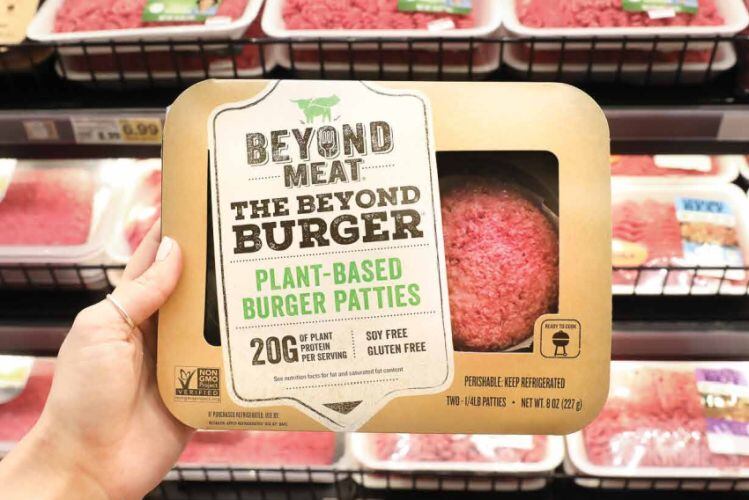The expansion into new foodservice outlets comes on the heels of Impossible Foods' partnership with co-manufacturer OSI Group to ramp up food production to meet growing demand for the Impossible Burger across all sales categories including restaurants, college campuses, corporate canteens, theme parks, and large fast food chain customers (e.g. Burger King, White Castle, Qdoba).
According to Sodexo, its decision to use and serve the Impossible Burger isn't just a result of the meat alternative's taste and high consumer approval rating, but also its environmental benefits. When compared to a traditional meat-based burger, it takes 96% less land, 87% less water, and 89% fewer GHG emissions to produce the Impossible Burger, claimed Impossible Foods.
Sodexo creates Impossible Foods menu
The new menu created by Sodexo's culinary team will feature the Impossible Burger along with seven other plant-based food items using Impossible Foods products including a sausage muffin sandwich, sausage gravy and biscuits, a steakhouse burger, and a creole burger.
"We are excited to expand our menu to include the Impossible Burger's flavorful blend, which will be featured in several new products this fall," said Rob Morasco, senior director culinary development, Sodexo, in statement.
"We're really thrilled to see that Sodexo's culinary team is making unique and versatile dishes with the Impossible Burger," said Dana Worth, head of sales at Impossible Foods, who added that the company’s mission is to continue to reach more meat eaters.
"Our ambitious mission to reach meat eaters could not be done without the delicious offerings like their breakfast sausage and burger combinations, and we look forward to seeing how diners react to them," commented Worth.
As the NPD group stated in a previous report: "Although vegetarians and vegans are certainly contributing to the growth in plant-based, they still represent a small (single digits) percentage of the US population and aren’t the primary contributors. A larger percentage of the overall adult population, 18%, are trying to get more plant-based foods into their diets.”
Cornering the mainstream foodservice channel
While the Impossible Burger launched first in higher-end restaurants in major metro areas, it has since expanded into more mainstream locations including quick-service restaurants chains, where it is winning over meat eaters on taste alone.
“Plant-based burgers allow consumers to substitute without sacrifice. They get the ‘burger’ experience while assuaging their need for more protein and [addressing] social concerns,” said Darren Seifer, food and beverage industry analyst at NPD Group.
According to NPD Group, shipments of plant-based protein from broadline foodservice distributors to foodservice operators increased by 20% in the year ending November 2018 vs. the previous 12 months.
Consumer interest in trying the Impossible Burger has been on the rise across the foodservice channel including online food delivery service Grubhub where orders increased by 82% within the past year, and quick-service restaurants, where 228 million orders of plant-based meat alternatives have been made in the past 52 weeks ending in May 2019.
Further propelling this trend, the Impossible Burger will be available at more than 7,000 Burger King locations nationwide by the end of 2019 where it's positioned prominently on the fast food chain's menu alongside conventional meat burgers and features the same sesame seed bun, cheese, and condiments as the traditional Whopper.




